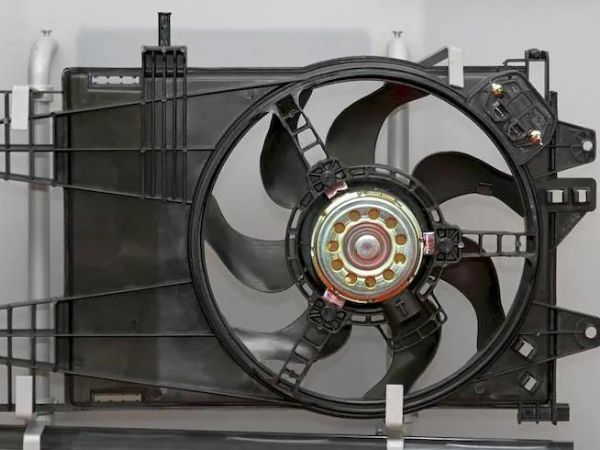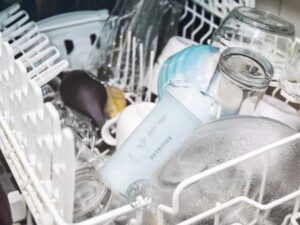How To Straight Wire A Cooling Fan?

Cooling fans play a crucial role in maintaining optimal temperatures in electronic devices and equipment. Straight-wiring a cooling fan is a method used to enhance its performance and control. By eliminating the factory wiring harness, you can directly connect the fan to a power source, allowing for increased efficiency and customization. In this article, we will guide you through the process of how to straight wire a cooling fan, providing step-by-step instructions and important tips to ensure a successful installation.
Contents
- 1 Importance of Straight Wiring a Cooling Fan
- 2 Understanding the Basics of Cooling Fan Wiring
- 3 Tools and Equipment Required for Straight Wiring
- 4 Safety Precautions Before Straight Wiring
- 5 Identifying the Positive and Negative Terminals of the Cooling Fan
- 6 Choosing the Right Gauge of Wire for Straight Wiring
- 7 Selecting the Appropriate Connectors for the Wiring Process
- 8 Removing the Factory Wiring Harness from the Cooling Fan
- 9 Stripping and Preparing the Wires for Straight Wiring
- 10 Connecting the Wires to the Cooling Fan Terminals
- 11 Securing the Connections and Insulating the Wiring
- 12 Routing and Organizing the Wiring for a Neat Installation
- 13 Testing the Straight Wired Cooling Fan
- 14 Troubleshooting Common Issues During Straight Wiring
- 15 Benefits and Advantages of Straight Wiring Cooling Fans
- 16 Precautions and Limitations of Straight Wiring
- 17 Proper Maintenance and Care for Straight Wired Cooling Fans
- 18 Conclusion and Final Tips for Straight Wiring a Cooling Fan
- 19 FAQs: (How To Straight Wire A Cooling Fan?)
Importance of Straight Wiring a Cooling Fan
Straight wiring a cooling fan offers several benefits that make it a popular choice among enthusiasts and professionals alike. By bypassing the factory wiring harness, you can optimize the power supply to the fan, resulting in improved cooling performance. Additionally, straight wiring allows for greater control over the fan’s speed and operation, enabling you to tailor it to your specific needs. This method also reduces the risk of potential wiring failures, ensuring a reliable and efficient cooling solution.
Understanding the Basics of Cooling Fan Wiring
Before diving into the straight wiring process, it is essential to have a basic understanding of cooling fan wiring. Cooling fans typically consist of two main components: the fan itself and a wiring harness. The wiring harness connects the fan to a power source, usually through a motherboard or a fan controller. Straight wiring involves removing this harness and directly connecting the fan’s terminals to a power supply.
Auto Amazon Links: No products found. No products found. http_request_failed: A valid URL was not provided. URL: https://ws-na.amazon-adsystem.com/widgets/q?SearchIndex=All&multipageStart=0&multipageCount=20&Operation=GetResults&Keywords=Home+appliances|SAMSUNG+Galaxy+S23+Ultra+5G|How+To+Straight+Wire+A+Cooling+Fan%3F|SAMSUNG+Galaxy+S23+Ultra+Cell+Phone|Is+it+good+to+connect+radiator+fan+directly%3F&InstanceId=0&TemplateId=MobileSearchResults&ServiceVersion=20070822&MarketPlace=US Cache: AAL_b82e973510deb17569a0e695cc274b1e

Tools and Equipment Required for Straight Wiring
To straight-wire a cooling fan, you will need a few essential tools and equipment. Make sure you have the following items readily available:
- Wire cutters/strippers
- Electrical tape
- Heat shrink tubing
- Soldering iron and solder
- Screwdriver (if necessary for fan removal)
- Wire connectors (such as butt connectors or wire nuts)
- Heat gun or lighter (for heat shrink tubing)
Safety Precautions Before Straight Wiring
Before you begin the straight wiring process, it’s crucial to prioritize safety. Always remember to disconnect the power source or turn off the device you’re working on to avoid electric shocks or other accidents. Additionally, ensure that you are working in a well-ventilated area to prevent any potential heat buildup or fumes from soldering.
Identifying the Positive and Negative Terminals of the Cooling Fan
Before straight wiring, it’s important to identify the positive and negative terminals of the cooling fan. Most fans have clear markings indicating which terminal is positive (+) and which is negative (-). These markings are usually labeled as “P” for positive and “N” for negative. If the fan doesn’t have clear markings, consult the manufacturer’s documentation or look for color-coded wires, where red typically indicates positive and black indicates negative.
Choosing the Right Gauge of Wire for Straight Wiring
Selecting the appropriate wire gauge is crucial for successful straight wiring. The wire gauge determines the amount of current that can safely pass through the wire without overheating or causing damage. For cooling fans, it is generally recommended to use 18 or 20 gauge wires, as they can handle the current requirements without significant voltage drop or heat generation.

Selecting the Appropriate Connectors for the Wiring Process
To ensure secure and reliable connections, it’s important to choose the appropriate connectors for the straight wiring process. Depending on the specific fan and wire type, you can use various connectors such as butt connectors, wire nuts, or even soldering. Butt connectors are popular as they provide a reliable connection and are easy to crimp onto the wires.
Removing the Factory Wiring Harness from the Cooling Fan
To straight wire the cooling fan, you need to remove the factory wiring harness. This harness is usually connected to the fan terminals using connectors, screws, or clips. Carefully disconnect the wiring harness by following the manufacturer’s instructions or using a screwdriver or pliers, if necessary. Take note of how the wires were connected to the terminals for reference during the straight wiring process.
Auto Amazon Links: No products found. No products found. http_request_failed: A valid URL was not provided. URL: https://ws-na.amazon-adsystem.com/widgets/q?SearchIndex=All&multipageStart=0&multipageCount=20&Operation=GetResults&Keywords=Samsung+Galaxy+s23|How+are+electric+cooling+fans+controlled%3F|Galaxy+s23|SAMSUNG+Galaxy+S23+Ultra+Cell+Phone|Home+appliances&InstanceId=0&TemplateId=MobileSearchResults&ServiceVersion=20070822&MarketPlace=US Cache: AAL_225534182579ede952fe6424e96751ba
Stripping and Preparing the Wires for Straight Wiring
After removing the factory wiring harness, strip the insulation from the ends of the wires to expose the conductive metal. Use wire strippers to remove approximately 1/4 inch of insulation from each wire. Ensure that the exposed metal strands are clean and free from any damage or fraying. This step is crucial for creating secure and reliable connections.
Connecting the Wires to the Cooling Fan Terminals
Now it’s time to connect the wires directly to the cooling fan terminals. Match the positive wire (usually red) to the positive terminal and the negative wire (usually black) to the negative terminal. Securely attach the wires to the terminals using the appropriate connectors, ensuring a tight and reliable connection. Follow the color-coding or markings on the fan and double-check the polarity to avoid any potential damage or incorrect operation.

Securing the Connections and Insulating the Wiring
Once the wires are connected to the cooling fan terminals, it’s essential to secure the connections and insulate the wiring to prevent any shorts or accidental contact. Use electrical tape or heat shrink tubing to cover the exposed metal portions of the wires and connectors. Apply heat to the heat shrink tubing using a heat gun or lighter to shrink it and create a tight seal around the connection. This step adds an extra layer of protection and ensures the longevity of your straight wired cooling fan.
Routing and Organizing the Wiring for a Neat Installation
Proper routing and organization of the wiring contribute to a neat and professional installation. Secure the wiring along the desired path using zip ties, adhesive clips, or other suitable methods. Make sure the wiring is away from any moving parts, sharp edges, or areas of high heat. A clean and organized wiring layout not only improves aesthetics but also facilitates easier maintenance and troubleshooting in the future.
Testing the Straight Wired Cooling Fan
After completing the straight wiring process, it’s crucial to test the cooling fan before finalizing the installation. Connect the fan to a power source and observe its operation. Ensure that it spins smoothly and consistently, without any unusual noises or vibrations. Additionally, check if the fan speed can be adjusted if desired. If the fan doesn’t operate as expected, double-check the wiring connections and troubleshoot any potential issues.
Troubleshooting Common Issues During Straight Wiring
During the straight wiring process, you may encounter common issues that can hinder the proper functioning of the cooling fan. These can include incorrect polarity, loose connections, or wiring faults. If you face any problems, refer to the manufacturer’s documentation or consult online resources for troubleshooting guidance. Remember to double-check the wiring, connectors, and polarity to identify and resolve any potential issues.

Benefits and Advantages of Straight Wiring Cooling Fans
Straight wiring a cooling fan offers several benefits and advantages. By bypassing the factory wiring harness, you can achieve improved cooling performance, increased control over fan speed, and reduced risk of wiring failures. Straight wired fans also allow for customization and compatibility with different power sources or fan controllers. Overall, this method enhances the cooling capabilities of the fan and contributes to better heat dissipation in electronic devices or equipment.
Precautions and Limitations of Straight Wiring
While straight wiring offers numerous advantages, there are a few precautions and limitations to keep in mind. Straight wiring may void the warranty of the cooling fan or the device it is installed in, so it’s important to consider the potential consequences before proceeding. Additionally, ensure that the power source you connect the fan to can handle the increased current requirements. Exceeding the power supply’s capacity can lead to overheating, equipment damage, or electrical hazards.
Proper Maintenance and Care for Straight Wired Cooling Fans
To ensure optimal performance and longevity of straight wired cooling fans, proper maintenance and care are essential. Regularly clean the fan blades and surrounding areas to prevent dust buildup, which can impede airflow. Inspect the wiring connections periodically and tighten any loose connectors if necessary. If you notice any abnormal fan behavior or performance, promptly address the issue to avoid further complications.
Conclusion and Final Tips for Straight Wiring a Cooling Fan
Straight wiring a cooling fan is a practical and effective method to enhance its performance and control. By following the step-by-step instructions outlined in this article, you can successfully complete the straight wiring process. Remember to prioritize safety, choose the right tools and connectors, and ensure proper wiring organization. By straight wiring your cooling fan, you can achieve improved cooling efficiency, customization, and reliability in your electronic devices or equipment.
FAQs: (How To Straight Wire A Cooling Fan?)
Q1: Can I straight wire any cooling fan?
A1: In most cases, you can straight wire any cooling fan that has identifiable positive and negative terminals. However, it’s important to check the specifications and compatibility of your specific fan model before proceeding with straight wiring.
Q2: Do I need any specialized knowledge or experience to straight wire a cooling fan?
A2: While basic knowledge of electrical connections is helpful, straight wiring a cooling fan can be accomplished by following step-by-step instructions. However, if you’re unsure or uncomfortable with electrical work, it’s advisable to seek assistance from a professional or someone with experience in this area.
Q3: Will straight wiring void the warranty of my cooling fan?
A3: Straight wiring may void the warranty of your cooling fan or the device it is installed in. It’s important to consider this before proceeding with the modification. If warranty preservation is a priority, it’s recommended to consult the manufacturer or refer to the product documentation for guidance.
Q4: Can I adjust the fan speed after straight wiring?
A4: The ability to adjust the fan speed after straight wiring depends on the specific fan model and the power source or fan controller you connect it to. Some power sources or fan controllers offer speed control options, while others may provide a fixed speed. Ensure compatibility and check the documentation of your power source or fan controller for details.








